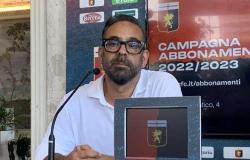«A jewel, in the most important archaeological area of the entire planet. Which confirms the importance of culture as an opportunity for socioeconomic development.” Upon reopening of theAncient Beachthree thousand square meters returned yesterday to visitors to the Archaeological Park, not even the unbearable heat dampens the enthusiasm of the Minister of Culture Gennaro Sangiuliano.
Before embarking on a long tour, guided by the Park director Francesco Sirano and from Jane Thompson of the Packard Humanities Institute, he says proudly: «Let’s move forward, as you know I am present in all territories. I am not a minister from Ztl or radical chic, my presence here indicates the government’s commitment to an active and concrete path.” And he underlines: «We have refinanced the excavations with the budget law, there are active construction sites like never before».
The new structure of the entire area of the ancient beach, financed under the CIS (Institutional Development Contract) Vesuvius-Pompei-Naples coordinated and managed by the Great Pompeii Unit, it aims in the medium term to reunite the main archaeological area with the Villa of the Papyri. «One of the most iconic places in the entire city» he defines it Francesco Siranodirector of archaeological parkwith pride increased by its Herculaneum origins.
«The ancient beach is an extraordinary place, the only seafront of a Roman city that is almost entirely preserved. We have reduced the risk of continuous flooding and the dangers to the stability of the excavation fronts and the sea front of the ancient city, reviewing it today like the ancient Romans. Let’s restore the landscape of 79 AD and let everyone walk on the beach again.”
Previously, the area could only be partially visited, thanks to a metal walkway – now eliminated – which only allowed you to get closer to the structures. In the sheds on the sides of the beach, which is now entirely walkable, there are the skeletons – which came to light in the excavations of the late 1980s – of some of the over three hundred desperate people «who tried in vain – continues Sirano – to be saved thanks to a real operation of civil protection directed by the Roman admiral and scholar Pliny the Elder».
As with the bradyseism of current times in the Phlegraean Fields, at the time the effects of the volcano were felt here: over the centuries the coastline has changed its level several times, rising and falling at least since the 3rd century BC, before the eruption of Vesuvius. Three years ago the ancient beach also returned the skeleton of the last fugitive from Herculaneuma man of approximately 40-45 years of age.
He was probably found on the seashore or in the areas of the city above, dragged by the force of the eruption together with his belongings, preserved in a fabric bag. The laboratory excavation of the earthen block which enclosed the bag highlighted that inside the bag contained a wooden coin holder with a compartment inside which there were some rings and some tablets for writing, always made of wood, the content of which will be clarified by the continuation of the micro excavation.
Thanks to the project, the natural spring waters – the ancient beach is approximately three meters below sea level – and the water collected from ancient sewers of the city were brought under control and in part reused. In this way, the continuous flooding that endangered the stability of the excavation fronts and ancient monuments and had created a marshy landscape that had never existed on this site was eliminated. Today, however, the beach has taken on the appearance of how it appeared before the eruption.
© ALL RIGHTS RESERVED
Read the full article at
The morning





